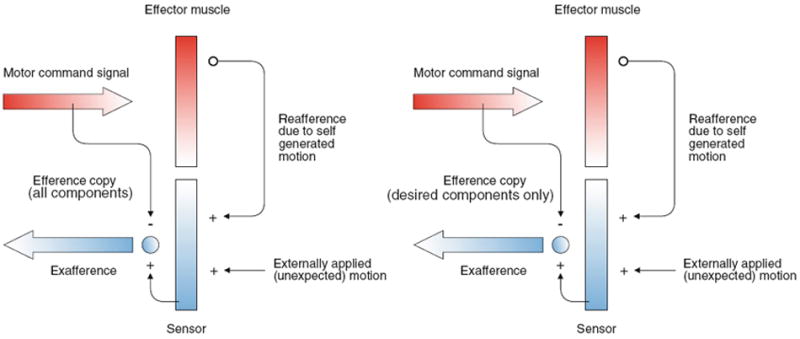Fig. 11.

von Holst and Mittelstaedt’s (1950) reafference principle as applied to the vestibular system. a A motor command is sent to the effector muscle and, in turn, there is reafference resulting from the effector’s activation of vestibular sensors. The reafference (+) is compared with an efference copy of the original motor command (−). When the reafference and efference copy signals are equal, they cancel and no sensory information is transmitted to higher levels. In contrast, a difference between afference and efference copy indicates an externally generated event (exafference) that is behaviorally relevant and is further processed by the vestibulocollic reflex (VCR). b. Here, the efference copy signal includes only the desired head movement (minus oscillations). The exafference signal, which includes the oscillations, as well as external perturbations, is processed by the VCR. Modified from Angelaki and Cullen (2008)
